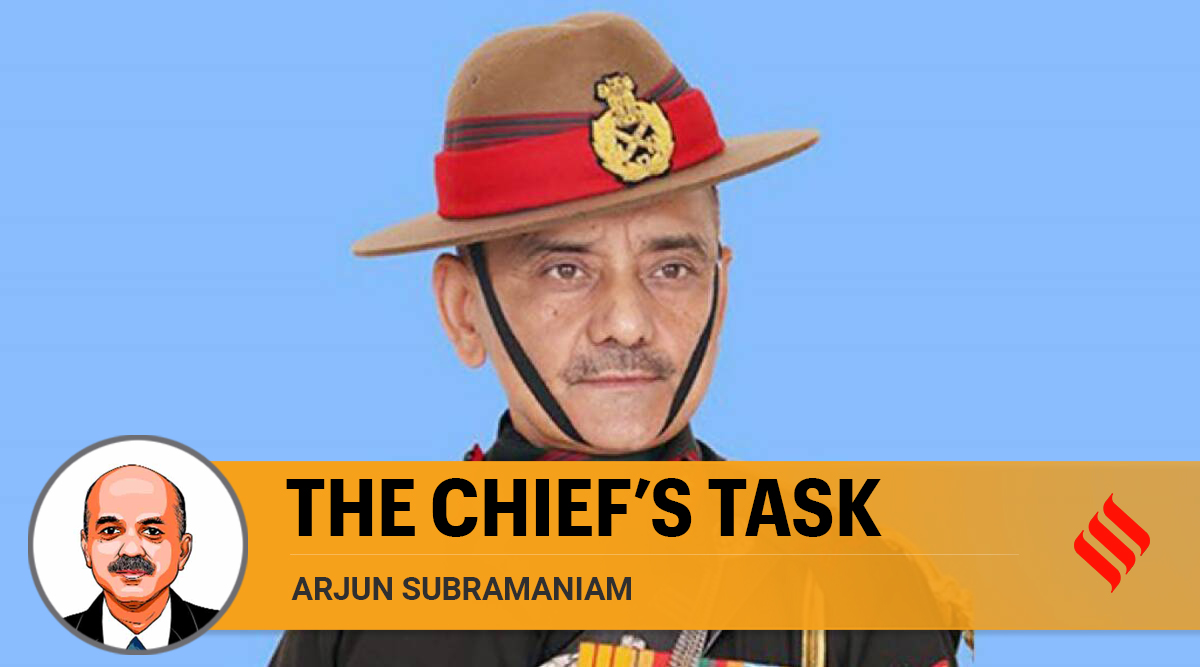 Lt General (retired) Anil Chauhan.
Lt General (retired) Anil Chauhan.The appointment of Lt General (retired) Anil Chauhan as the Chief of Defence Staff (CDS) is a welcome move and ends a period of intense but needless speculation about the future of the post and whether the government was contemplating on experimenting with a naval or air force officer, or doing away with it altogether. The experience gained by General Chauhan during his stint as the Military Advisor to the NSA will stand him in good stead as it is certain to have not only widened his understanding of national security but would also have offered him deep insights into the often articulated transformation road map that the Prime Minister is so keen to roll out by 2024. A confidante of the previous CDS, Chauhan has had a bird’s eye view of the hits and misses of his predecessor. He needs to objectively and impartially evaluate them if he wants to win the trust and confidence of the three services on the inevitable road to integration and transformation.
The armed forces in a mature democracy are normally seen as a constitutionally empowered instrument of the state under the umbrella of civilian supremacy. If one draws on the Clausewitzian paradigm of “war is a continuance of policy by other means”, they are also seen as political instruments of the state. In his seminal work, The Soldier and the State, Samuel Huntington spoke about subjective civilian control over a professionalised military, where the latter operates with a great deal of autonomy and is largely trusted by the politicians to offer sound policy advice. This has largely been the model followed in the West with different degrees of control exercised by the political executive.
In several ways, India’s armed forces have also followed this model with the difference that a powerful layer of bureaucracy has catered to the sporadic interest among politicians in matters related to national security and acted as a policy interface between the two. Considering that India’s track record of building national security capability and responding to national security crises has been at best modest over the last 75 years, it was only a matter of time before a transformative government would start asking questions and suggesting to this professional albeit cumbersome and bloated organisation that it needed to change with the times and keep pace with the demands of the contemporary security environment. The first challenge for the new CDS is in terms of prioritisation and building a bridge between a government in a hurry and an organisation that is resistant to change, shackled by tradition and plagued by continued turf battles that cannot be wished away.
His next set of challenges will be to balance five competing requirements that have overwhelmed the armed forces in recent years and exposed the shortage of intellectual capital within. First, the need to build operational capability at a pace that will ensure that the military power asymmetry vis-à-vis China remains manageable. Second, integrating military planning and training to levels that go beyond lip service. There is little doubt that the need to create fresh structures to support integrated training, planning and operations is inevitable. Hard questions will have to be asked about whether India-specific requirements have been adequately addressed in the current structures. There will be no easy answers and individual services will have to walk the extra mile under the reassuring and credible umbrella of the CDS.
The third requirement is in the area of policy, doctrines and strategy. Armed forces across the world are driven by structured processes, tactics, techniques and procedures (TTPs). Policies and doctrines are easier to evolve under the cover of clearly articulated national and military strategies. Though the strategic establishment is divided on the pressing need for a National Security Strategy (NSS), the CDS has his task cut out to link the NSS with transformation and expedite its promulgation.
His fourth area of focus has to be on balancing the need to retain the operational capability and the government’s push towards self-reliance in defence manufacturing. Considering that this push demands a paradigm shift in the thinking of India’s defence innovation and manufacturing ecosystem, the CDS should ensure that the current silos of innovators and designers (scientists), manufacturers (PSUs and the private sector) and users (armed forces) are broken down. Enduring capabilities can be created only if users are afforded lateral entry into the innovation and manufacturing space. One needs to look no further than the US, France and Israel to embrace this push. However, this again links to forcing the armed forces to step out of their comfort zone and develop diverse intellectual capital.
The last challenge will be in the realm of shedding several infructuous colonial legacies and traditions and fostering a sense of pride in India’s martial traditions that go back to epics such as the Mahabharata, and to the Maratha and Chola empires. Independent India’s armed forces have been adaptable and flexible and should not find it difficult to blend what is good from recent times with what offers value from the past — nowhere else in the world have Soviet-built MiG-21s and MiG-29s adopted Western air combat tactics with such ease.
The CDS must not hesitate to speak truth to power. He must be impartial while taking tough decisions and hold national interest above all else — that will be the test of his acumen. In a rapidly-evolving geopolitical and global security environment, in which India continues to face challenges across the spectrum of conflict, the CDS has his task cut out. Let us wish him well!
The writer is a retired Air Vice Marshal and is the President’s Chair of Excellence in National Security Affairs at National Defence College, New Delhi